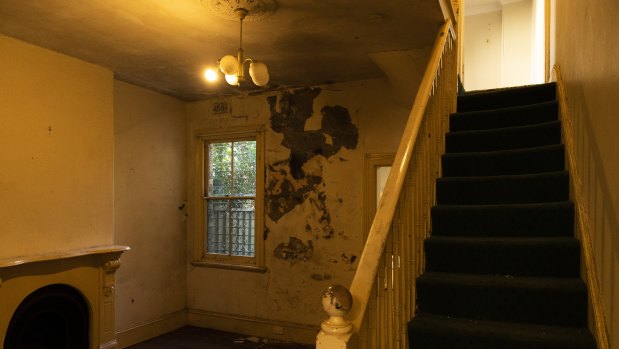Luke Rust, 30, originally from the UK, noticed a gap in the Aussie market for “shared” cars after moving to the Gold Coast in 2020 at the start of the pandemic.
He took a punt and went on to create Outbound — a tech start-up that is already disrupting the Australian tourism industry.
“My partner and I bought our first family car — a VW Tiguan for $40,000, but we quickly needed a second car as public transport access is poor in our area and Uber is expensive,” Luke told news.com.au.
However, after forking out another $30,000 on a Hyundai i30, Luke said the car was only used for two trips a week.
“So it sat idle for 99 per cent of the week,” I added.
The 30-year-old, who has a background in future mobility, spoke to other residents in his apartment block who told him they too only needed 1.5 cars.
“So the idea of owning one and accessing one when you need it became obvious,” he said.
It was at this time Luke thought to create a contactless car sharing platform for apartments.
“We realized that the same product could apply in hotels and commercial buildings too.”
In a first of its kind concept in Australia, Luke went on to create Outbound, investing in a Tesla Model 3 that can be used by hotel guests for as little as $30 for an hour.
“This is a really exciting development for the Australian tourism industry,” he said.
Luke explained that shared mobility is slightly different from traditional car sharing in the sense that it’s not private vehicle owners renting out their personal cars to make money; rather vehicles are attached to a property and are available for communal use, exclusively for those who are staying or living there.
He said Gold Coast hotel, Mantra at Sharks at Southport, was the first to jump at his idea having launched the service in April with the Tesla now considered one of the hotel’s amenities — just like its gym, bar or concierge.
“The car can be booked by guests using the Outbound app, and is parked on site at
Mantra at Sharks, saving the hassle of finding a car rental outlet,” Luke said.
“The app is really easy to use — guests just sign up, reserve the car and unlock it using
their phone. It’s really handy for anyone wanting to go for a day trip, say to the theme parks or out to hinterland.”
The Tesla can be rented out for $30 per hour and includes insurance and power, so guests only pay for how long they use it. There’s also no paperwork involved.
“Especially with fuel prices going up, a road trip to the Gold Coast is becoming increasingly expensive — this way tourists can perhaps jet into the Airport, stay at the hotel, and still go anywhere they want using the electric vehicle (EV).”
Luke said apart from its environmental benefits, the luxury and novelty surrounding Teslas is what attracted him to the vehicle, over any other.
“At the time, Tesla was the best value for money because we wanted a vehicle with a range of at least 400km, a brand that was intriguing/attractive to users and properties, and then the wider environmental benefits of driving electric,” Luke explained.
He purchased it for around $65,000 and said it is now worth more “than we paid for it so the car is profitable really quickly”.
Luke said guests also love the drive/acceleration of the Model 3 and the giant touch screen. “Interestingly, they all feel really safe in the Tesla due to the additional cameras, sensors and guidance systems on the vehicles.”
He said so far the response has been “awesome” with guests loving the idea of driving around in a luxury car, for a reasonable price.
“People love not having to wait at a service desk and the idea of driving a Tesla,” he said. “But with anything new, we are finding ways to improve.
Luke said it can take some people a while to work out how to get moving.
“When people first jump inside a Tesla, it can be overwhelming and we are working hard to improve that.”
Luke said he’s in discussions to roll the scheme out in other hotels on the Gold Coast,
as well as Brisbane, Sydney and Melbourne.
He also expects an uptake of the concept in residential and commercial buildings, where
owners and tenants would have access to one or several EV’s and reduce dependence
on private vehicle ownership.
“The cost of owning a personal car can reach $17,000 per year,” he said.
“If communal EVs were available for use, and that could just be included in your body corporate fees, you could cut a huge chunk of that expense.
“Not to mention, save on parking space and improve local air quality.”
Read related topics:Brisbane
.





















